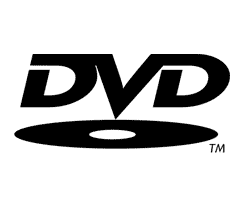| Storage Media | Hard Disks | DVD Disc | |||
| Optical Discs | Tape Media | Flash Drive | |||
| Zip Catridges | RAID | Removable Media | |||
| (U)niversal (B)us (S)erial |
What is DVD?
 |
DVD ARCHITECTURE
 |
DVD is a 0.6mm thick disc made of poly-carbonate plastic and has a very much thinner reflective layer made of gold or aluminium. Two 0.6mm discs are joined together to form a 1.2mm thick DVD bonded-disc that allows data to be read from either one side (single-sided) or two sides (double-sided) by laser beam.
In DVD, lens with higher Numerical Aperture (i.e. NA) is achieved to refine the laser assembly; hence allow usage of lesser smaller pits and narrower tracks. Modulation scheme of 8 to 17 (EFM PLUS) is used to provide DVD more efficient backward compatibility.
Another special and outstanding feature adopted by DVD is the powerful technique of error correction to recover from even large scratches with nearly no loss of data. The RS-PC (Reed Solomon Product Code) is used in this technique which allows as 10 times more robust than which is currently used in CD system. Also, DVD is provided with several configurations of data reader ranging from 2D to 3D storage. Each configuration allows different additional storage capacity.
DIFFERENT FORMATS OF DVD
 |
DVD-ROM
Provide high-capacity computer ROM storage. Data types stored range from multimedia, computer games, interactive systems to databases. DVD includes variety of recordable variations including DVD-R, DVD-RAM, DVD+RW and DVD-RW D-ROM
DVD-Audio
Provides far higher quality surround-sound music with increased playing time.
DVD-Video
Provides high-quality multi-lingual movies on one disk with random-access to episodes and surround-sound audio.

